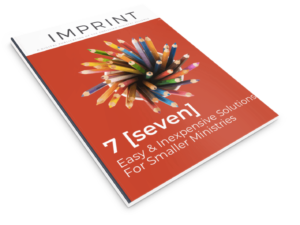This article was originally posted on the “Governance of Christ-Centered Organizations” blog, hosted by ECFA.
John Pearson, a board governance consultant and author, was ECFA’s governance blogger from 2011 to 2020.
There is a wide continuum of beliefs concerning the board member’s role in fundraising. Policy Governance® zealots warn against board committees that replicate staff work. According to John Carver, “Board committees are to help get the board’s job done, not to help with the staff’s job.” You may disagree—and that’s OK.
Whether you’re discussing fundraising in your board meeting, or wearing your volunteer hat to suggest improvements, it’s 100 percent certain you’ll be talking about fundraising when your year-end results are in. (Was it a thumbs-up or thumbs-down year?)
So…for what it’s worth, here’s my list of 10 fundraising mistakes I notice frequently. The good news—all 10 are fairly easy to fix. I’m not suggesting you put these on the board agenda (it’s staff work, not board work)—but from a board policy perspective, who owns the annual evaluation of your fundraising program?
MISTAKE #1: Donor letters that thank every person for their faithful giving—when, in fact, the letter is also sent to non-donors! (Easy Fix: segment your list into donors and non-donors.)
MISTAKE #2: A donor gives a gift to the ABC program, but the president’s generic thank you letter highlights the XYZ program. (Easy Fix: segment your thank you letters to appropriately report on progress for the specific gift given.)
MISTAKE #3: When a donor gives online, the emailed receipt is inappropriately designed for product purchases with a “shipping and handling” line, etc. (Easy Fix: use online giving software. Using a “one-size fits all” software program only communicates to donors that you don’t have your act together. Board members: give an online gift today–and assess the quality of the giving experience, and the receipting process.)
MISTAKE #4: When Mary Smith receives an appeal letter, or a thank you letter, addressed to “Dear Mrs. Smith,” but the CEO calls her by her first name, “Mary,” it’s one more indication that there is a sloppy, undisciplined development approach. (Easy Fix: customize every donor record. Good software will help you do this.)
MISTAKE #5: Focusing on the year-end tax benefits of giving versus the importance of the ministry’s work and results. When we appeal to tax-saving versus soul-saving, we miss the opportunity to disciple donors in what Wes Willmer calls the “Revolution in Generosity.”
MISTAKE #6: Asking major givers for minor gifts. One size doesn’t fit all. In fact, Mark Dillion believes most ministries have four distinct segments of donors. If so, each segment should be challenged to give at an appropriate, but differing level:
• The Gifted Giver (2-5% of givers)
• The Thoughtful Giver (15-25% of givers)
• The Casual Giver (35-50% of givers)
• The Reluctant Giver (perhaps 33% of givers)
MISTAKE #7: One-way communication. Think telephone, not megaphone. Ask your givers (here’s a thought!) why they give. It’s the third question in Peter Drucker’s classic five questions that every organization must ask: “What does our [donor] value?” Ask: What do you appreciate about our ministry? What would you change? What do you value about our donor appeals, newsletters, website, special events, etc.?
MISTAKE #8: “This is a return envelope!” Vince Lombardi, the celebrated coach of the NFL’s Green Bay Packers, would start each season’s first practice session with this line “Gentlemen, this is a football!” Trust me, if Coach Lombardi was a fundraising consultant, he would begin each session with the four fundamentals that are often missing in direct mail pieces. Don’t let inexperienced staff (or board members) move you off the fundamentals:
1. The outer envelope (Interest me! My opinion: mailing labels cheapen the message.)
2. The letter (Inform and inspire me!)
3. The response device (Direct me! What do you want me to do?)
4. The return envelope (Make it easy for me. Even if I give online, maybe this time I won’t. Please give me a return envelope.)
MISTAKE #9: Short letter? Long letter? Wrong question! Roger Ebert, the movie critic, famously said, “No good movie is too long and no bad movie is short enough.” Ditto board meetings and donor letters. My wife reads every donor letter from one of her favorite organizations—because the letter is well-written, inspiring, interesting and packed with Kingdom impact. While focused on human crises, the letter never manipulates. She will frequently insist I read the letter. Most other letters (short or long) are tragically boring. Those have a short path: mailbox to waste basket.
MISTAKE #10: Ask. Ask. Ask. Ask. Ask. Hey! Take a breath and report back on how my gift helped introduce a person to eternity, or changed a marriage, or gave hope and healing in Jesus’ name. I understand you need more money—but I need more information. As I pray, discern and sort through competing requests, I always tilt toward the ministry that sees me as a partner, not a feedbag. Try this: Ask. Thank. Report. Inquire. Ask again.



Thanks alot for the message. I receive it.